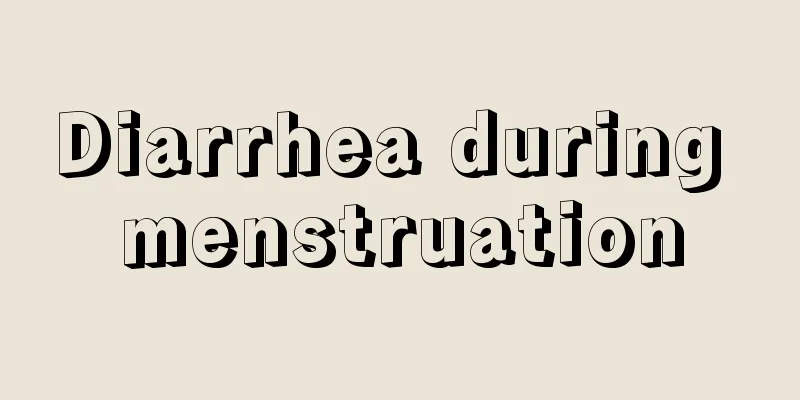Just one drop of heel blood is used to give a congenitally deaf child a new voice

|
Analysis of 10-year data on genetic screening for neonatal deafness in Peking Union Medical College Hospital Newborn screening is the screening and diagnosis of some diseases in early infancy to avoid serious clinical consequences. It is an important measure to prevent and reduce birth defects. In 2000, newborn hearing screening was included in the "Maternal and Child Health Care Law of the People's Republic of China", affirming the importance and necessity of newborn hearing screening. At present, newborn hearing screening has been maturely applied nationwide, playing an important role in ensuring the auditory perception and speech development of infants and young children. However, newborn hearing screening cannot detect the risk of late-onset, progressive deafness and drug-sensitive deafness, and cannot make an etiological diagnosis of hereditary deafness. Genetic screening for deafness in newborns helps to identify individuals at high risk of hereditary deafness at an early stage and take targeted intervention measures at an early stage. It is a powerful supplement to newborn hearing screening, so combined genetic screening for deafness is imperative. ① From 2012 to 2022, Peking Union Medical College Hospital used the microarray chip method to perform deafness gene screening on 165,813 newborns, of which 8,019 failed the screening, with a screening positive rate of 4.84%. (Table 1) Table 1 Results of newborn ear gene screening at Peking Union Medical College Hospital from 2012 to 2022 ② In the newborn population, four deafness-susceptible mutation genes were found, and the order of gene mutation carrier rate from high to low was *GJB2, SLC26A4, GJB3, and *mitochondrial 12S rRNA. (Table 2) Table 2 Carrying status of four common ear susceptibility gene mutations in 165 813 newborns in Peking Union Medical College Hospital from 2012 to 2022 ③ Follow-up intervention for people at high risk of deafness. Among the 8019 newborns who failed the genetic screening for deafness, there were 126 carriers of multiple mutations, accounting for 1.57% of the screening-positive newborn population. They were at high risk of deafness, and their families were followed up for hearing and provided with genetic outpatient counseling. (Table 3) Table 3 Multiple mutations of four common ear susceptibility genes in 165 813 newborns in Peking Union Medical College Hospital from 2012 to 2022 Hearing aid fitting, cochlear implants and other intervention measures were given to 44 children with hereditary deafness genotypes and their families (Table 4) to delay and reduce the children's hearing loss. Table 4 Hearing screening and follow-up intervention for newborns with genotypes in Peking Union Medical College Hospital from 2012 to 2022 In addition, for 405 cases with drug-sensitive deafness genotype, their family screening reports were accompanied by drug warning cards, and medication warnings were issued to maternal family members. Medication warnings can effectively prevent children from developing deafness caused by aminoglycosides. It is particularly gratifying that in the 10 years since the Peking Union Medical College neonatal deafness genetic screening project was launched, with the joint efforts of laboratories, genetic clinics and maternal and child health institutions, the overall lost follow-up rate of the project has dropped from 0.63% to 0.07%, and the rate of visits to neonatal and family genetic counseling clinics has increased from 38.05% to 54.16%. Effective follow-up and genetic clinic visits can achieve the expected goals of the project and save a lot of medical rehabilitation expenses for society and individuals. In short, over the past 10 years, the neonatal deafness gene screening project of Peking Union Medical College Hospital has continued to operate smoothly, completing about 160,000 newborn screenings with a low loss rate. The genetic clinic has provided genetic counseling, hearing follow-up and necessary hearing intervention diagnosis and treatment services to nearly 4,000 newborn families. At present, the screening, follow-up and consultation intervention platform operates efficiently and smoothly, and can effectively solve the needs of families with positive screening, fertility guidance, prognosis assessment, etc. It is believed that with the innovation of new-generation sequencing methods and genetic diagnosis technologies, relying on the current platform and standardized operation mode, the genetic screening capacity and screening scope of neonatal deafness will be further improved. The theme of this article comes from the "Articles" column of "Journal of Peking Union Medical College" Issue 6, 2022: "10-year data analysis of genetic screening for neonatal deafness in Peking Union Medical College Hospital" Original author: Gao Ruzhen, Fan Yue, Yang Tengyu, Li Dongdong, Guo Ying, Jiang Hong, Xu Yingchun, Chen Xiaowei 【References】 [1] Norris VW, Arnos KS, Hanks WD, et al. Does universal newborn hearing screening identify all children with GJB2 (Connexin 26) deafness? Penetrance of GJB2 deafness[J]. Ear Hear, 2006, 27: 732-741. doi: 10.1097/01.aud.0000240492.78561.d3 [2] Minami SB, Mutai H, Nakano A, et al. GJB2-associated hearing loss undetected by hearing screening of newborns[J]. Gene, 2013, 532: 41-45. doi: 10.1016/j.gene.2013.08.094 [3] Pagarkar W, Bitner-Glindzicz M, Knight J, et al. Late postnatal onset of hearing loss due to GJB2 mutations[J]. Int J Pediatr Otorhinolaryngol, 2006, 70: 1119-1124. doi: 10.1016/j.ijporl.2005.10.026 [4] Xia JH, Liu CY, Tang BS, et al. Mutations in the gene encoding gap junction protein beta-3 associated with autosomal dominant hearing impairment[J]. Nat Genet, 1998, 20: 370-373. doi: 10.1038/3845 [5] Liu Xin, Dai Pu, Huang Deliang, et al. Large-scale screening of mitochondrial DNA A1555G mutation and its preventive significance[J]. Chinese Medical Journal, 2006, 86: 1318-1322. https://www.cnki.com.cn/Article/CJF Editor: Liu Yang and Zhao Na Proofread by Li Na, Li Yule, and Dong Zhe Producer: Wu Wenming 【Copyright Statement】 "Pumch Medical Journal" advocates respecting and protecting intellectual property rights. Reprinting and quoting are welcome, but authorization from this platform is required. If you have any questions about the content and copyright of the article, please send an email to [email protected], and we will communicate with you in a timely manner. The graphic content is for communication and learning only, not for profit; the popular science content is only used to popularize public health knowledge. Readers should not use it as a basis for individual diagnosis and treatment, and do not dispose of it on their own to avoid delaying treatment. For medical treatment, please visit the Peking Union Medical College Hospital APP online or offline. |
<<: Spring Growth Contest, how to help children achieve a "comeback" in height growth?
>>: How to distinguish sinusitis from rhinitis? What is the difference between them?
Recommend
What should women eat to replenish kidney yang deficiency?
Women can also have kidney yang deficiency. Kidne...
Vulva redness without itching
Some people will find that their vulva looks a li...
What are the most effective methods to improve egg quality?
For women, only when their eggs are healthier can...
Interesting Talk About Medicine丨Tanduspirone (with audio)
Your browser does not support the audio tag...
Reasons for early second pregnancy
After a pregnant woman becomes pregnant, as the n...
Various problems of pelvic pain in pregnant women
The human pelvis is composed of the sacrum, coccy...
In which month do pregnancy spots usually appear?
In which month do stretch marks usually appear? T...
Benign breast tumors
There are many common breast diseases. When treat...
When exactly does a woman enter menopause?
When it comes to menopause, many women are partic...
What should I do if I smoke and I don't know I'm pregnant?
Everyone knows that smoking is harmful to physica...
What is postpartum disease?
In the medical sense, postpartum disease refers t...
I have small itchy bumps in my vagina.
Vulvar itching is mainly caused by gynecological ...
Is "old cold legs" caused by not wearing long underwear? The temperature is about to warm up, can we take off the long underwear?
Review expert: Peng Guoqiu, deputy chief physicia...
What are the side effects of breast augmentation implants?
Many female friends want to enlarge their breasts...
Does hairy tofu mean it has gone bad? Why can we still eat tofu with hair on it?
We all know that tofu is a common soy food. It ha...



![[Rare Disease] Unusual headaches - neuronal intranuclear inclusion disease](/upload/images/67f19dfc6966a.webp)





